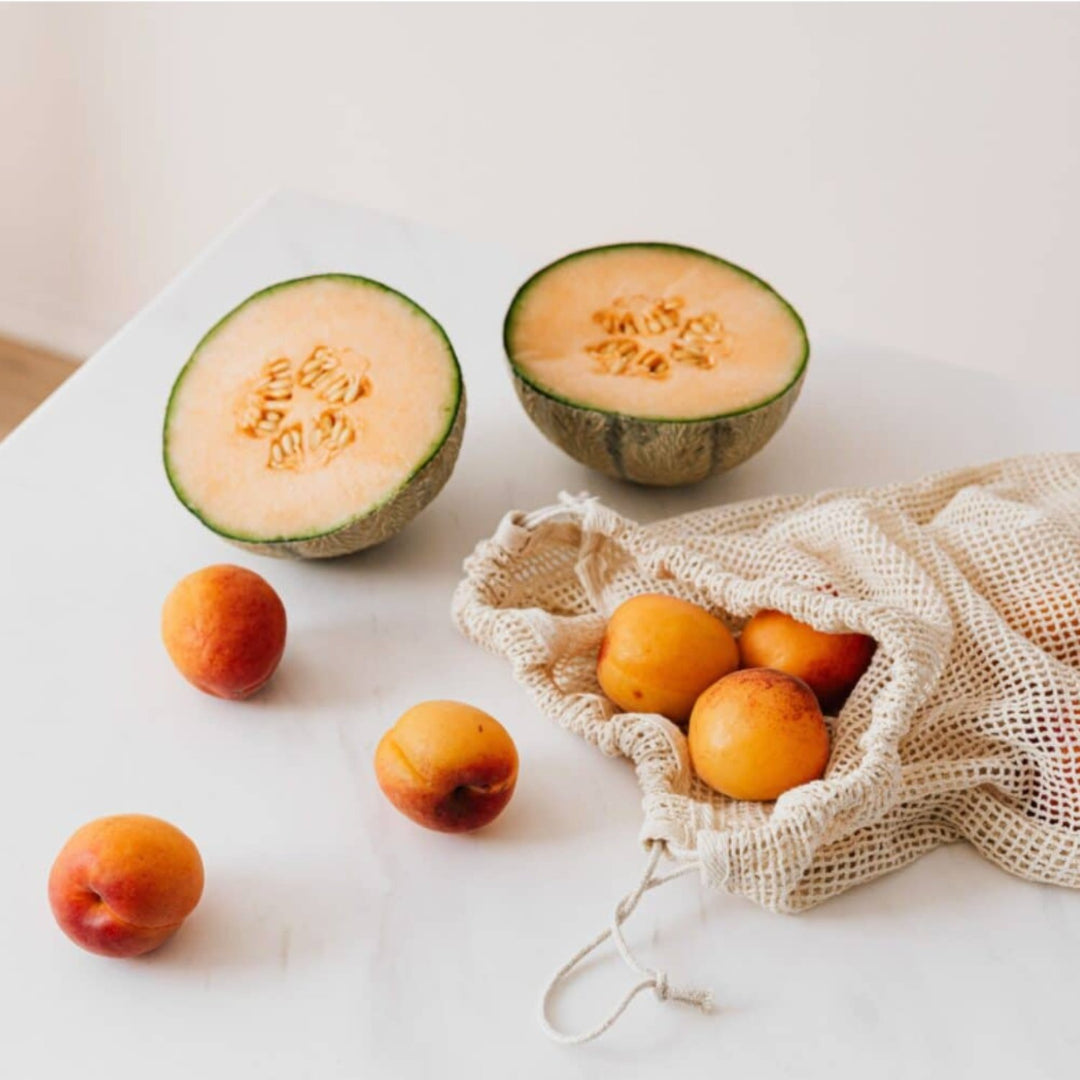You’re probably familiar with a classic fairy-tale ending that goes a little something like this: “And they lived happily ever after...”
But what if it went a little more like this: “And they lived happily ever after with their multiple partners, together having many children and raising them in a wonderful village”? Sounds pretty good, doesn't it?
In a mononormative society (i.e., one that presents monogamous, often heterosexual partnerships as the only valid and acceptable model for living in love), non-monogamous relationships are still highly stigmatized. And yet, monogamy isn’t for everyone.
Are you already in a relationship but thinking about expanding your horizons? Do you want to deepen certain connections with other people? Explore sexually? Share intimacy with friends? Or simply have the freedom to flirt?
Well, that’s perfectly normal. Having desires for people other than your partner doesn’t make you a player or an alien!
We spoke to Rosalie Bonenfant − an actress, author, and host with a free and outspoken heart − to find out more about her experiences off monogamy’s beaten track. Here are a few tips we wish we’d known when we opened up our own relationships.
What is non-monogamy?
According to AlterHéros’s definition, non-monogamy “is a relationship model based on consensus between all partners in which sexual and/or romantic non-exclusivity is allowed.”
The notion of consensus is essential if non-monogamy is to be ethical; without a common agreement between partners, it’s actually infidelity. That’s not what we’re looking for!

Determine the kind of relationship you’re interested in
Polyamory, open relationships, trouples − there are as many non-monogamous relationship configurations as there are people involved. The important thing is to co-create a relationship that makes you feel good, safe, loved, understood, and respected.
Do you want to explore with your partner or on your own? Are you looking for emotional connections, or is your desire purely sexual? Or both?
Start by determining the type of relationship that appeals to you. Clear intentions will help open the discussion with your partner.
P.S. You might not be sure what you want, and that’s absolutely fine. There’s a good chance that what you’re looking for will evolve over time.
Identify your limits
Opening up your relationship is work for two (or three or more!), but above all, it’s work you have to do on yourself. Take the time to sit down with yourself and determine your limits.
For example, you may not be comfortable with the idea of you and your partner developing romantic feelings for other people. In this case, you might want to prioritize ephemeral encounters. Or do you feel insecure about having one-night stands with strangers? If you do, you might choose to have experiences only with trusted people who are already part of your social circles.
In short, knowing your limits and naming them allows you to set parameters that will protect your comfort zone. It’s also important to respect your partner’s limits, which may be different from your own. This dynamic of mutual respect is the way to go!
Little tip: Our limits fluctuate according to a whole range of factors, such as our level of anxiety, our fatigue, and influences that can be even more difficult to process. It’s possible that despite the parameters you and your partner establish, there’ll come an evening when you feel more fragile and don’t want your partner to go on a date. When that happens, it’s important to vocalize your feelings: “I’m feeling fragile. I’d like you to stay with me tonight.” Opening your relationship doesn’t mean advocating openness at all costs; above all, it means respecting each person’s rhythm and limits.
Approach the subject with gentleness, empathy, and transparency
When you start the discussion with your partner, be sensitive to their feelings. If you sense some reluctance, it’s important not to be pushy. The aim of the discussion isn’t necessarily to reach an immediate consensus but to sow a seed (which may or may not germinate).
The prejudice that non-monogamy is the result of one partner’s inadequacy is still widespread. Take the time to reassure your partner that they’re enough and that your desire to open the relationship doesn’t change your love or desire for them. It’s precisely because you trust them that you feel safe initiating the discussion.
Reflection: Why do we have several friends who meet different needs but only have one partner? We’re multiple beings with multiple needs − emotional, affective, and sexual. Opening up to other partners takes the pressure off one person to fulfill them all.
Looking after a few small details can make all the difference
Find a space where you can talk in peace and privacy (a party with all your friends might not be the ideal place!).
Choose a time when you can chat without stress (if you have a dentist appointment in 15 minutes, that might not be the best time!).
Make sure your partner has the emotional space to have this discussion, as it can make people feel very vulnerable.
Another suggestion: You can open up the subject more broadly by saying, for example, “Hey, I read an article on Mme L’Ovary’s blog about non-monogamy, and it made me want to talk to you about it. Have you ever thought about being non-monogamous?"

Remember that your value isn’t diminished by that of others
It’s normal to feel challenged if your partner has eyes for others. We’ve learned that we should only desire one person and reject everything else! We’ve also been socialized to compete with other people, so a pretty common thought might go a little like this: “What if he meets someone hotter than me?!”
This is a good time to deconstruct that competitive reflex, since there’s little doubt that your partner will meet people who are beautiful on the inside and out! But here’s the thing: other people’s beauty in no way diminishes your own. To help you remember that, repeat the following mantra as often as necessary: “The light of others casts no shadow over me.”
Strengthen your compersion muscle
Compersion what?! Compersion is the happiness we feel when our partner flourishes, especially in a relationship with another partner. In short, it’s the opposite of jealousy.
Just as you rejoice when your friend spends quality time with another friend (in the knowledge that you can’t expect them to have only beautiful moments with you!), it’s possible to feel genuine happiness knowing that your partner has shared a moment that brought them joy (and yes, even if that experience doesn’t directly involve or benefit you!).
Note that just because we feel compersion doesn’t mean we can’t or won’t feel jealousy. The two can co-exist. The goal isn’t to live in a world of unicorns and butterflies where jealousy doesn’t exist. The important thing is to learn to name it, welcome it, and bring it to a constructive place so you can better understand where it comes from.
Organize your schedule (time isn’t infinite!)
My mother used to tell me that love doesn’t divide, it multiplies. This saying makes even more sense now that I’m polyamorous!
But beware: while love can be many things, time is a finite resource.
Take care to establish with your partner how often you feel comfortable seeing other people. This is important if you want to avoid making someone feel less valued.
For example, our parameters in terms of time for me and my partner are as follows: prioritize our relationship (i.e., give it more time in our schedule) and see other partners no more than once a week. We agree that these are guidelines, and that we don’t time everything with a stopwatch!
Google Calendar is your best friend. ;-)
Plan regular check-ins
Like everything else in life, your limits will change, and your degree of openness may fluctuate too.
To keep things on track, set aside some time for fine-tuning to make sure you’re still comfortable within the parameters you’ve set. These can be revisited as often as necessary.
If your moments of adjustment are difficult to live with and you feel the need for support, therapy can be a valuable ally to consider. <3
You don’t have to go all in!
We all agree that you don’t have to start with a threesome tomorrow! We often have the impression that it’s either monogamy or polyamory, but there are infinite possibilities in between − shades of lovely ambiguity between affection, intimacy, and sexuality.
For example, you could give yourself the freedom to simply flirt at first and see how that makes you feel. Then maybe you can experiment with kissing other people before going any further. Whatever pace you decide to set will be the right one.
By the way, if you and your partner find that your paces aren’t in sync, we advise you to move at the slower pace so as not to rush things.
Finally, all couples can benefit from questioning their relationship model, if only to ensure that it reflects the needs, desires, and limits of each person involved. Allowing yourselves this kind of vulnerability is an immense gift!
So there you go. Hopefully these tips help you and your partner have a good chat, and in the meantime, lots of L'Ove!
Some resources
Follow Rosalie Bonenfant: Instagram page, Facebook
Collective on sexuality: Magic Nights
Article: 5 reasons to try non-monogamy























